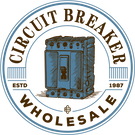What is the Best Type of Electrical Motor?
Electric motors are used in a wide range of residential and commercial environments. The main function of the device is to convert electric energy into mechanical energy.
There are two main types of electrical motors:
- Alternating current (AC)
- Direct current (DC)
There is a distinct difference between AC motors and DC motors. First of all, the latter uses electricity and a magnetic field to create torque. Both AC and DC motors are further subdivided into various categories according to their functions.

Brushless DC Motors
This type of motor is mostly used in industrial settings because of the significant speed it produces with minimal torque. The speed-torque relationship varies depending on the form required. A notable benefit of brushless DC motors is that they have the ability for continuous application. What makes this type of motor suitable for industrial applications is the fact that you can vary the speed-torque relationship to fit any useful form. Brushless DC motors can produce more than five times the required torque and are often found in industrial generators used by hospitals as emergency alternatives to power outages.
Asynchronous AC Motors
This type of motor has an AC transformer and a rotating secondary attached to the primary power source. The main role of the secondary motor is to transmit the induced current and produce torque. Asynchronous AC motors are also known as induction motors and are often used in generators, water pumps, washing machines, and dryers.
Limited-Angle DC Motors
This type of electric motor is designed to generate torque within a preset angle, usually 180 degrees or less. Limited angle DC motors are often used in complex equipment and systems including direct laser mirrors and heat sensors. These electrical motors are often used in military applications and guidance systems.
Stepper Motor
This is a type of DC motor often used in industrial automation processes. It plays an important role in stepping the rate of rotation of the motor, which assists in controlling the robotic arm of automation mechanisms, for example. Stepper motors are highly accurate, a trait that is critical to the automation process.
Linear Electric Motors
This type of motor is quite popular because it is relatively cheaper than rotary electric motors. People first started using this type of motor about 100 years ago. Linear electric motors feature large air gaps and are often used in material handling applications including indoor forklift equipment. One of the benefits of this type of motor is that t runs quietly and efficiently. Another significant benefit of linear electric motors is that they do not require drive gearboxes.
Electric motors found in homes require either 120 volts or 240 volts. However, dual voltage motors are often designed for either 120 volts or 240 volts.
The three types of motors have different designs and connections:
- 120-volt motors usually feature one hot wire, one neutral wire, and one ground wire.
- 240 volt motors feature two hot wires and a ground wire; they do not have a neutral wire.
- Dual voltage motors have one hot wire and a neutral or two hot wires and a neutral depending on the voltage used.




